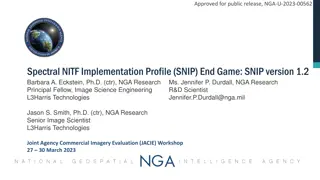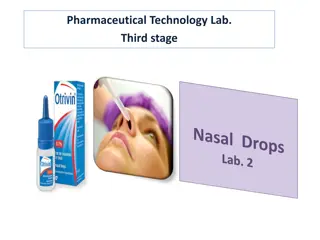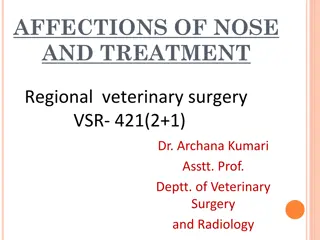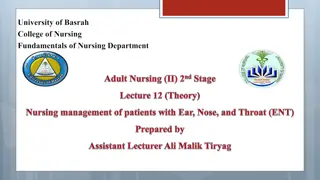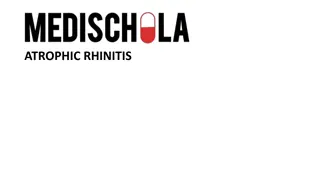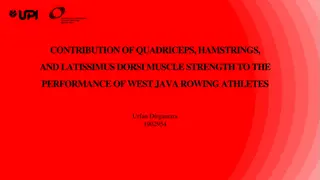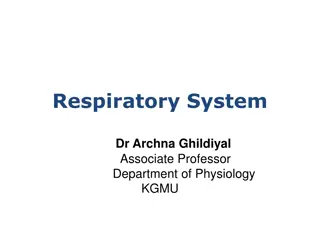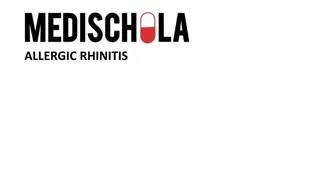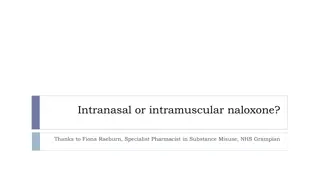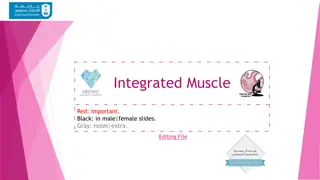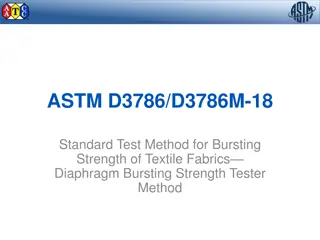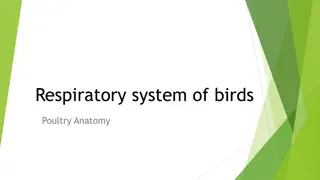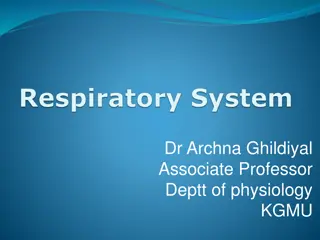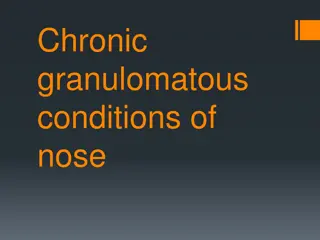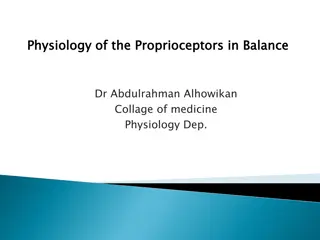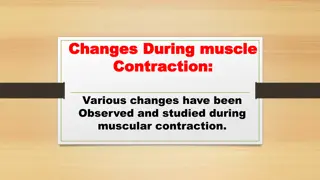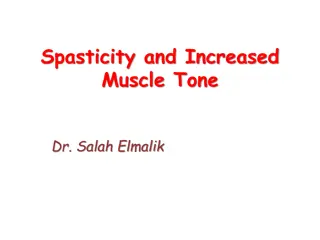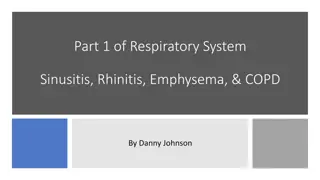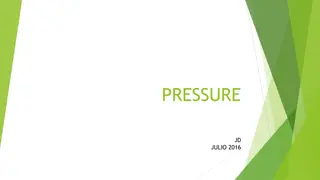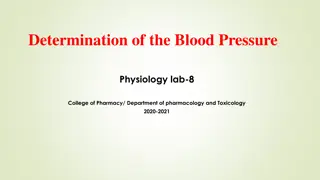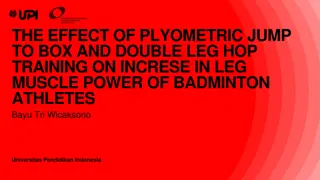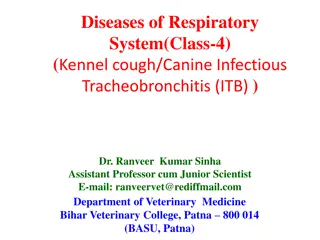Sniff Nasal Inspiratory Pressure (SNIP): Assessing Respiratory Muscle Strength
SNIP is a sensitive non-invasive test that measures inspiratory muscle strength by assessing nasal pressures during a sniff maneuver. It is a valuable tool for early detection of respiratory muscle decline, providing insights into potential threats like hypercapnic respiratory failure, impaired cough function, and lung infections. SNIP offers a natural and easier alternative to traditional MIP tests, aiding in the diagnosis and management of various respiratory conditions.
Download Presentation

Please find below an Image/Link to download the presentation.
The content on the website is provided AS IS for your information and personal use only. It may not be sold, licensed, or shared on other websites without obtaining consent from the author. Download presentation by click this link. If you encounter any issues during the download, it is possible that the publisher has removed the file from their server.
E N D
Presentation Transcript
X. Conference of functional examinations of the lungs SNIP for assessment of inspiratory muscle strength Hans-J rgen Smith, Berlin, Germany Zl n 20th 21st May 2022
Sniff Nasal Inspiratory Pressure SNIP Maximal sniff nasal inspiratory pressure (SNIP) is a sensitive test to early disclose respiratory muscle decline.
Sniff Nasal Inspiratory Pressure Method Placement The Sniff Nasal Inspiratory Pressure (SNIP) is an alternative measurement to the classic volitional static test of inspiratory muscle strength, which is Maximum Inspiratory Pressure (MIP / PImax). i A sniff manoeuver is more natural and easier to perform than static efforts for most subjects. ! Careful quality check to drastically reduce over-diagnosis of muscle weakness!
Sniff Nasal Inspiratory Pressure Physiology and limitations During a vigorous sniff, the nasal valve of the patent s nostril collapses and the pressure beyond the collapsed segment closely reflects oesophageal pressure and therefore inspiratory muscle strength. ! Limitations that lead to under-diagnosis Severe nasal congestion Hinders pressure transmission Leads to falsely low values Severe or acute airflow limitation Underestimation of SNIP pressure in acute asthma (15%) or COPD (20%)
Indications for SNIP ATS/ERS Statement to the diagnosis of the breathing pump Breathing pump Breathing centre Conducting nerves Thoracic wall and inspiratory muscles Bony thorax Fatigue or failure of inspiratory muscles stands for: A potentially threatening condition Imbalance between muscle load and capacity In severe case hypercapnic respiratory failure Impaired cough and airway clearance Risk for lung atelectasis and infection Acute respiratory failure in neuromuscular disorders Restrictive pattern in lung volumes or spirometry Association to long-term mortality in cardiovascular disease or COPD See indications of MIP (PImax) ATS/ERS Statement on Respiratory Muscle Testing. Am J Respir Crit Care Med. Vol 166; 2002: 518-624
Sniff Nasal Inspiratory Pressure Background and methodology SNIP measurement - background Non-invasive test No need of a mouthpiece Natural and easy manoeuver During sniff Strong activation of diaphragm and scalene muscles Reliable assessment of diaphragm strength Often used as alternative to the MIP (PImax) measurement SNIP is an accurate and non-invasive approximation of the oesophageal pressure swing during sniff manoeuvres. i Methodology Measurement of peak nasal pressure at one occluded nostril during a short maximal sniff performed from relaxed end-inspiration (FRC) through the contralateral nostril. The mouth is closed.
Clinical application Preparations and test procedure / instructions Preparations Patient in sitting position. One nostril occluded with a nasal plug connected to the pressure transducer via silicon tube. Contralateral nostril is open, mouth closed. 2 0 0 Pressure (cmH2O) Pressure [kPa] Test procedure After normal tidal breathing the subject performs a sharp and maximal sniff from end-expiratory level (FRC). Target parameter: SNIPpeak After 5-7 trials a plateau in SNIPpeak values should be visible. Up to 15 to 30 s pause between trials. SNIPpeak 16 P(av) 1 6 0 12 8 1 2 0 4 8 0 SNIP target parameter SNIPavg and SNIPsus not recommended. ! SNIPpeak Sniff nasal inspiratory peak pressure 4 0 Time (s) 2 4
Reference values Adults and children Reference values Children: Stefanutti (6-17) Adults: Uldry (20-80) SNIP is similar in adults and children Nearly age independent SNIP in healthy subjects is often higher than MIP. Limits of agreement between SNIP and MIP. SNIP and MIP are NOT interchangeable. Complementary information. ! D.Stefanutti et al. Sniff Nasal Inspiratory Pressure. Am J Respir Crit Care Med 1999; 159: 107-111 C.Uldry et al. Maximal values of sniff nasal inspiratory pressure in healthy subjects. Thorax 1995; 50: 371-375
Quality check & clinical interpretation Parameter SNIPpeak Quality check Minimal 3 trials. Plateau of SNIPpeak values. SNIPpeak CV% < 10%. Mean Predicted Lower Limit of Normal (LLN) Evaluation of dysfunction Abnormal SNIPpeak < LLN Z-score classification
Comparison of MIP and SNIP Learning effects and reproducibility 71 study subjects performed MIP and SNIP during 2 sessions one week apart. Trial effect NS V Trial effect 2nd week 1st week Learning effect p=0.0008 in MIP 4.5 + 1.7 trials to max. value 3.4 + 1.9 trials to max. value MIP MIP * P < 0.05 Without week effect p=0.54 in SNIP 7.0 + 3.7 trials to max. value 7.4 + 3.7 trials to max. value SNIP SNIP Trial effect Trial effect Terzi N, et al. Mouth and Nasal Inspiratory Pressure: Learning Effect and Reproducibility in Healthy Adults. Respiration 210; 80:379-386
Conclusion The classic MIP is difficult to perform for some subjects. Sniff testing SNIP is based on a natural and easy manoeuvre and therefore more suited for most subjects. SNIP target parameter SNIPpeak Sniff nasal inspiratory peak pressure ! Recommendation to perform multiple tests of respiratory muscle function (SNIP + MIP) in order to increase diagnostic precision.


